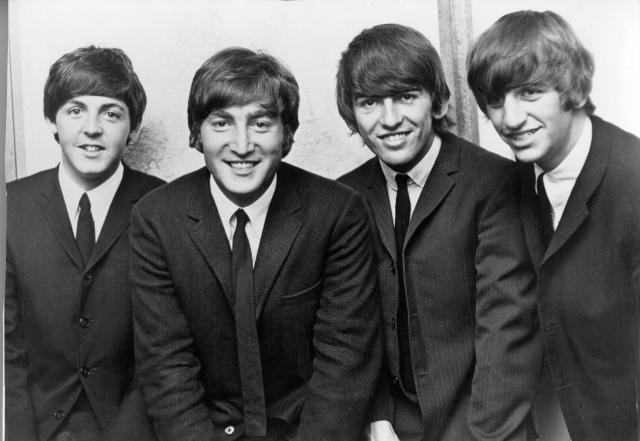The Beatles, shaped in Liverpool in 1960, are much of the time hailed as the best and most persuasive band throughout the entire existence of well-known music. Including John Lennon, Paul McCartney, George Harrison, and Ringo Starr, The Beatles re-imagined music as well as made a permanent imprint on worldwide culture, design, and accepted practices. Their excursion from a nearby club band to worldwide whizzes is a demonstration of their unrivaled ability, imagination, and development.
Early Starting points
The Beatles’ story started in Liverpool, where John Lennon, Paul McCartney, and George Harrison met and began playing together in a band called The Quarrymen. They later selected Ringo Starr and shaped The Beatles. Their initial years were set apart by persistent visits and exhibitions in clubs, especially in Hamburg, Germany. These gigs leveled up their abilities and very close to science as a band.
Their most memorable critical break came in 1962 when they endorsed EMI’s Parlophone name and met maker George Martin, who assumed an essential part in forming their sound. The arrival of their presentation single, “Love Me Do,” in October 1962, denoted the start of Beatlemania. Their initial music, described by infectious songs, harmonies, and direct verses, resounded with an expanding youth culture.
Beatlemania and Early Achievement
By 1963, The Beatles had turned into a public sensation in the UK. Their most memorable collection, “Kindly Please Me,” kept in a solitary long-distance race meeting, bested the English outline. Tunes like “If it’s Not Too Much Trouble, Satisfy Me” and “I Saw Her Remaining There” exhibited their vivacious wild style. The band’s appeal, Moxy, and new sound started extraordinary fan insanity, named “Beatlemania.”
In 1964, The Beatles accomplished global distinction with their appearance on “The Ed Sullivan Show,” which charmed a record-breaking American TV crowd. Their ensuing U.S. visit was a great achievement, laying out them as worldwide hotshots. The arrival of “A Hard Day’s Evening” (1964), both as a film and a collection, further set their predominance in the diversion world.
Melodic Development and Advancement
As The Beatles advanced, their music developed altogether. They started exploring different avenues regarding different melodic styles, complex courses of action, and reflective verses. The collection “Elastic Soul” (1965) denoted a takeoff from their previous work, consolidating people’s rock and reflective subjects. Tunes like “Norwegian Wood” and “In My Life” showed their developing development as musicians.
Their next collection, “Pistol” (1966), is viewed as one of the best collections ever. It highlighted imaginative studio procedures, for example, in reverse tapes and overdubbing, and investigated different classifications, from the traditional strings in “Eleanor Rigby” to the hallucinogenic “Tomorrow Never Knows.” The Beatles’ eagerness to analyze and push limits reclassified what was conceivable in well-known music.
The Hallucinogenic Time and Studio Dominance
The Beatles’ innovative peak accompanied the arrival of “Sgt. Pepper’s Desolate Hearts Club Band” (1967). This weighty collection, frequently credited with spearheading the idea-collection design, mixed rock, pop, old style, and Indian music into a firm and progressive work. The intricate creation, imaginative utilization of studio innovation, and topical attachment set new principles for the music business. Tracks like “Lucy Overhead with Precious Stones” and “A Day in the Life” stay notorious.
Their introduction to hallucinogenic music went on with the “Otherworldly Secret Visit” (1967) and the enlivened film “Yellow Submarine” (1968). Notwithstanding, their most thoughtful work accompanied “The Beatles” (1968), usually known as the “White Collection.” This twofold collection exhibited their singular abilities and various melodic impacts, from the hard rock of “Willy Nilly” to the sensitive “Blackbird.”
Later Years and Heritage
Regardless of their unmatched achievement, The Beatles confronted inner strains and imaginative contrasts. These finished in the recording of “Let It Be” (1970), which was loaded with struggle yet delivered works of art like “Let It Be” and “Across the Universe.” Their last studio collection, “Nunnery Street” (1969), is in many cases viewed as perhaps their best work, highlighting the notorious variety on Side Two and ageless tracks like “Something” and “Here Comes the Sun.”
The Beatles disbanded in 1970, however, their impact kept on developing. Every part sought after fruitful performance professions, offering further to their heritage. The Beatles’ effect on music is inconceivable; they reformed recording procedures, collection craftsmanship, and the actual idea of a musical crew. Their creative soul prepared for endless craftsmen and sorts, from psychedelia to moderate stone.
Last Thought
The Beatles were something beyond a band; they were a social peculiarity that changed the scene of music and society. Their excursion from Liverpool to the zenith of worldwide popularity is an account of unmatched ability, tireless inventiveness, and notable development. The ageless allure of their music, joined with their social effect, guarantees that The Beatles will be for all time recognized as the band that influenced the world.

